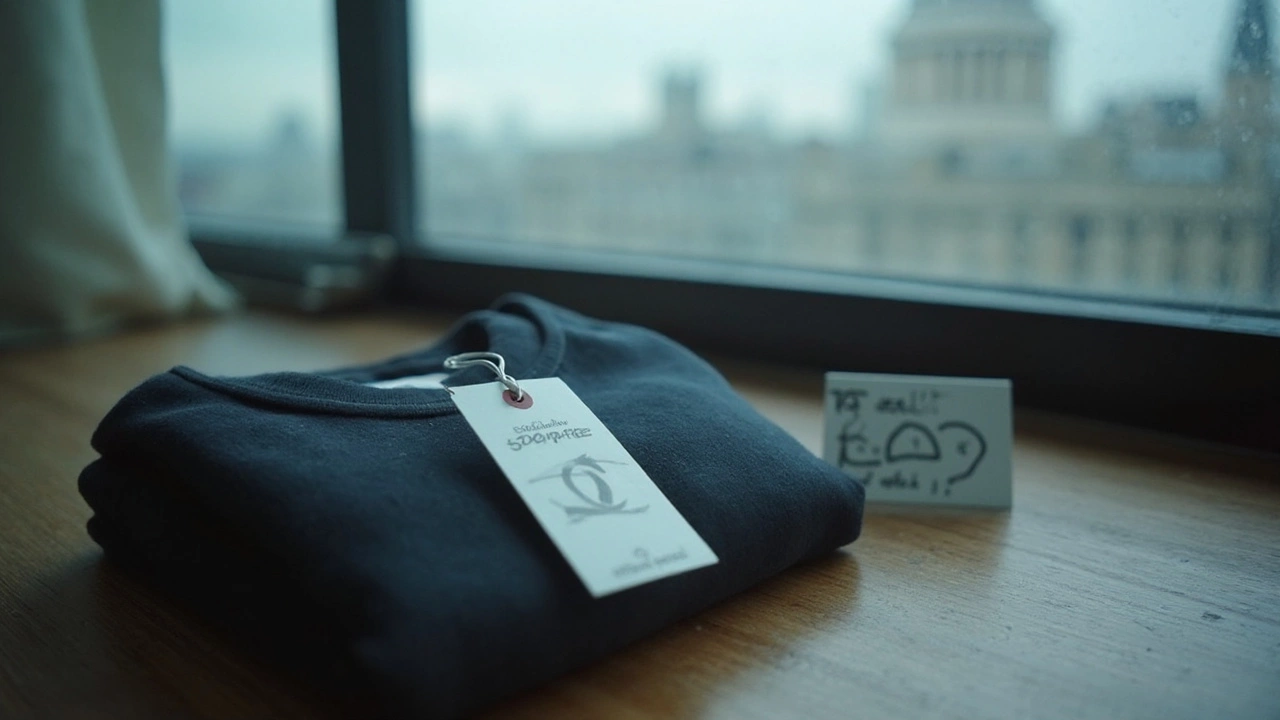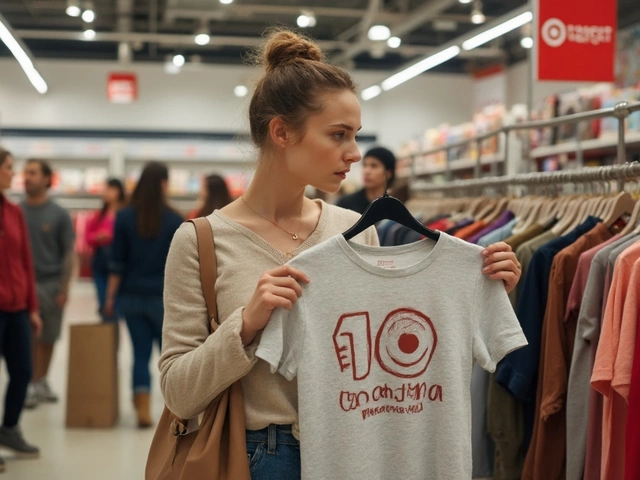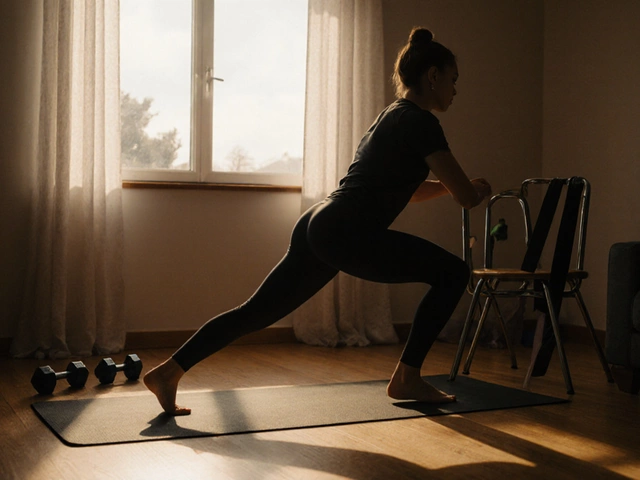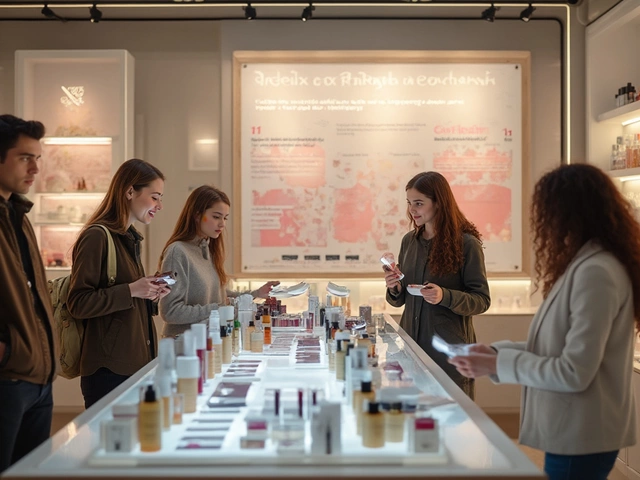Try picturing your closet without a hint of Target—pretty tough, right? Those $16 denim shorts, the fresh tees, swimsuits, and even a $30 work dress you grabbed in a rush. Target racks are everywhere, stacked with styles for every season and taste. But have you ever stopped to ask: Is Target just another fast fashion giant?
What Defines Fast Fashion—and Where Does Target Fit?
Let’s cut through the hype. Fast fashion is all about quickly making trendy clothes and selling them cheap. Think: new looks every couple of weeks, rushed production cycles, and sometimes questionable materials. Brands like H&M, Zara, and Shein lead the pack, launching loads of styles year-round, encouraging shoppers to buy more—because 'it’s so affordable.' The result? Overflowing closets and a mountain of textile waste that the world struggles to deal with.
When you zoom in on what Target does, it gets a little tricky. Technically, Target isn’t only a clothing brand; they’re a massive retailer selling everything from bananas to bath towels. But their in-house labels—like Wild Fable, Universal Thread, A New Day, and Cat & Jack—pump out new styles every season. People love picking up a cute jumpsuit or graphic tee while grabbing their weekly groceries. Their prices? Always wallet-friendly, and their clothing racks flip stock constantly. That ‘something new’ feeling? Target delivers it all the time.
So, here are some solid facts. Target launches new apparel lines about every few months, often switching out collections for back-to-school, holidays, or the change of seasons. According to 2024 Target corporate reports, their private-label apparel generated over $20 billion in sales last year, with growth in categories like women’s and kids’ clothing. These numbers put Target close to names like Gap and sometimes ahead of specialty clothing chains.
But ask Target directly if they see themselves as fast fashion, and you’ll get something like, “We make affordable, quality basics for families.” There are differences: most of their lines are basics and seasonal, instead of pumping out hundreds of micro-trends weekly. Still, fast fashion isn’t only about speed—it’s about disposable prices and frequent turnover. On that score, Target definitely checks a few boxes.
Fast fashion retailers usually have fast production cycles—sometimes as quick as two weeks from design to store. Target is slower in this regard, working with buyers and designers months in advance. This can be a good thing; it means more time to focus on quality and maybe more oversight. But compared to classic slow fashion (think Everlane or Patagonia), which drops a handful of collections per year and obsesses over lasting materials, Target is lightning fast and loves a good trend.

Digging into Target’s Sustainability and Manufacturing Practices
So, how is Target making its clothes, and who makes them? Fast fashion is notorious for dodgy labor practices and environmental shortcuts. And while Target puts plenty of info on its website about sustainable goals, you’ve got to squint to find real details.
Back in 2022, Target set a handful of big sustainability targets: sourcing 100% of its own-brand cotton sustainably by 2025, reducing greenhouse gas emissions, and aiming to divert more than 90% of its waste from landfills. They also joined the Sustainable Apparel Coalition and promised more transparency in their supply chains. That all sounds great—but how’s that playing out?
According to their most recent public report, Target achieved 50% sustainably sourced cotton for its in-house brands as of early 2024. That’s halfway there. They’re also pushing recycled polyester in some swimwear lines and their kids’ basics. But transparency is another struggle. Target works with more than 1,100 factories in dozens of countries, mostly in Asia, the U.S., and Central America. The company releases an annual list of "direct suppliers," but detailed info about wages, work conditions, or factory-specific stats can be hard to find.
In terms of clothing waste, Target accepts textile recycling at about 20% of its stores in the U.S., but it’s far from a universal program. There’s no in-store take-back option like the ones H&M offers for worn-out clothes.
| Initiative | Goal | Progress |
|---|---|---|
| Sustainable Cotton | 100% by 2025 | 50% (as of 2024) |
| Recycled Polyester Use | Expand in all private brands by 2025 | Growing, but not reported as percentage |
| Waste Diversion from Landfills | >90% by 2030 | 70% (2024) |
| Fair Labor Certification | All strategic suppliers by 2025 | On track—67% certified as of June 2024 |
So how does that stack up? It’s miles better than the typical fast fashion sweatshop playbook. But Target relies on the same supply chains as dozens of other mainstream retailers, and critics want more visibility on what “fair” actually means for workers’ pay and safety.
Here’s a tip: if you want to buy the most sustainable item at Target, look for the “Target Clean” and “Sustainably Sourced” tags. They show up most on basics and kids’ clothing. If tags mention GOTS (Global Organic Textile Standard) or OEKO-TEX certification, that’s a bonus. These fabrics dodge the chemicals and have stricter rules for water and labor.
One solid move: Target’s children’s line Cat & Jack has a one-year satisfaction guarantee. Can you imagine Zara or Shein doing that? If your kid outgrows or destroys those leggings, Target replaces them. That’s a nod to durability you don’t always get with fast fashion.

How Target Clothing Affects Your Closet and Wallet
So, say you love a good bargain but don’t want your clothes to fall apart in three washes. How does shopping at Target stack up compared to, say, H&M, Old Navy, or a 90’s mall favorite? The answer: pretty decent for the price.
Here’s the real scoop—Target clothes aren’t luxury, but they aren’t total throwaways. Because Target plans its fashion months ahead, you’ll get more seasonally classic pieces than on-trend microfads. That means your basic tees, jeans, or joggers will look good for a few years instead of a hot minute. Bonus: The $28 spring dress actually survives summer barbecue stains.
A quick quality hack: Check Target’s fabric blends before buying. Universal Thread jeans are mostly cotton—with some stretch—making them more durable. Wild Fable, the trendier line, leans heavily on synthetic fibers. If you want something that’ll last, aim for mid-weight cotton or linen pieces, skip the super-cheap polyester blends, and wash in cold water to avoid shrinking and fading.
Now let’s talk about why people love Target: accessibility. You don’t need a fat paycheck or a fashion-following Instagram feed to look put together. Families can pick up a week’s worth of school or work basics in one shot, all at prices that slip under the radar. That said, shopping cheap has a ripple effect. The faster we buy and toss clothes, the more ends up in landfills. According to the EPA, nearly 11 million tons of textile waste is landfilled in the U.S. every year, and cheap clothes play a big role—especially ones nobody wants to thrift.
But here’s the good news: About 25% of donations to thrift stores in the US come from Target’s private labels, according to a 2023 Goodwill survey. Their basic pieces (especially kids and men’s tees) hold up well and often sell again, which is more than you can say for fast fashion brands with super-fragile garments.
Looking to shop smarter? Try these tips:
- Stick to closet staples—classic denim, tees, sweatshirts—which outlast one-season trends
- Check care labels: longer-lasting fabrics like cotton, linen, or blends with more cotton content
- Use Target’s "Sustainably Sourced" tab online to filter clothing made from recycled or organic fibers
- Return ill-fitting kids’ clothes within a year under the Cat & Jack guarantee
- Buy off-season for steeper discounts and extend the life of clothes by mixing and matching layers
- Drop clean, gently used items at local thrift centers—Target basics resell well compared to ultra-cheap rivals
There’s no single answer to whether Target is true-blue fast fashion or not. But, when you look close, they’re a giant in affordable, quick-turnaround clothing—just a little more mindful than the fastest of fast fashion brands. If you follow the buzzwords, Target is still Target: friendly to your wallet, decent for your closet, and trying (but not perfect) on the sustainability front. So next time you snag a two-for-$10 tee, you’ll know exactly the kind of fashion you’re buying into—and maybe you’ll use it a little longer, too.







